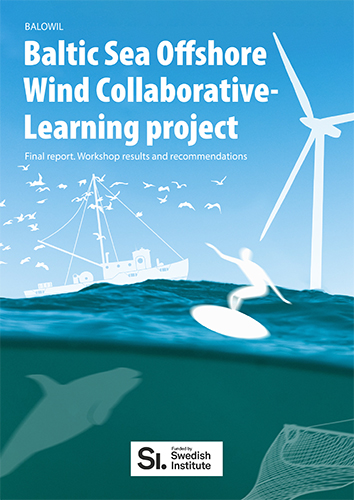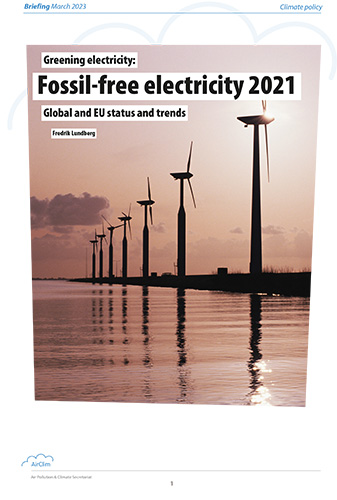

New Energy [R]Evolution Scenario from Greenpeace
The new 364-page Greenpeace scenario (GPER)1 portrays a world that is dominated by solar and wind by 2030 and even more so by 2050. Together they provide 43 per cent of electrical energy in 2030 and 75 per cent in 2050, replacing first lignite and nuclear, then coal and then gas. Biomass, geothermal and ocean power are given a minor role, but together with hydro they can help balance intermittent wind and photovoltaics. Much of this is what you would expect. Solar thermal, which produces power from solar heat, will also make also a big contribution, almost 19 per cent of all electricity by 2050, not so far behind PV. Heat can be stored, so power output is (somewhat) dispatchable, unlike PV, and can provide power at night. However, unlike photovoltaics, solar thermal power has so far not lived up to its promises. Greenpeace has long had high hopes for it, but has now postponed its breakthrough.
The hard part of reducing CO₂ emissions is not electricity, though. Neither is it heat, which can be provided via electricity, and that is what GPER counts on.
The hardest part is transport. There are three options: biofuels, electric cars, and hydrogen. Biofuels are produced in large quantity now, but mainly from farmland, where they may compete with food production and biodiversity. Electric cars are favoured by many car manufacturers, but Toyota, the biggest of them all, opts for hydrogen-powered fuel cell cars. GPER bets on both.
“The limited potentials of biofuels and probably also battery electric mobility make it necessary to have a third renewable option”, i.e. hydrogen.
This still means a tremendous increase in electricity (batteries) for road traffic: from 9 petajoules (PJ) in 2012, to 400 PJ in 2020 and 23,000 in 2050. Biofuels also increase, but only to about twice the present volume.
“The use of biofuels is limited by the availability of sustainably grown biomass. It will primarily be committed to heavy machinery, aviation and shipping, where electricity does not seem to be an option for the next few decades. Outside the transport sector, biomass is needed for specific industries to supply process heat and carbon”.
Let me add a personal note. When I interviewed people at the pro-CCS organisation Bellona in Oslo in 2008, their main line of argument was that CCS is needed because you cannot cut emissions enough without it. “Look at Greenpeace’s brand new [R]Evolution scenario”, they said. “It does not do the job!”
I found that this was true. The 2008 GPER projected just a 2 per cent global emission drop from year 2000 to year 2030. Fossil use in global primary energy demand would decrease only 50 per cent from 2010 to 2050. Obviously this was no way to save the world.
Intriguing. Greenpeace are no cowards. They are brave, outspoken, and smart!
They now have improved their act since 2008. The 2015 [R]Evolution sets 2050 CO₂ emissions at 4,358 Mtons, compared with 10,589 in the 2008 scenario. This means a fair chance of limiting warming to 2 degrees. But almost all the cuts are projected to take place after 2030. And this is not compatible with limiting warming to 1.5 degrees.
Maybe that is what is likely to happen, but what then is the point? The scenario should look at possibilities, to explain what Greenpeace wants, not what it guesses.
Now energy modelling is a tricky business. You feed in a lot of data and assumptions and the least you should ask for is internal consistency, so all the sums add up. It is mathematically quite demanding to construct a model that generates numbers on coal consumption In China in 2050 that fit together with economic growth assumptions and wind power installations in North America in 2025. Obviously you do not want wind power to grow very fast one year and then grind to a halt the next year, because unless you have a fairly consistent trend, the model will get very unstable, so a small change in one assumption will cause a landslide of big changes everywhere else. Unless the computer overheats.
But this requirement for stability and smoothness of curves in the model seems to lead to an unwarranted conservatism about the rate of change.
In the real world things happen superfast, stop or even slide backwards, and then skyrocket again. Two neighbouring countries move at extremely different speeds. Take solar power development in a group of countries since 2007.
In 2007, Germany was practically alone in its quest for solar, though Spain had just started. Then several countries experienced growth rates of several hundred per cent for several years. Spain, for example, grew its solar production from 0.5 TWh in 2007 to 12 TWh in 2012, i.e. by a factor of 24, or an average annual growth of 89 per cent. The 2008 growth was more than 400 per cent. The reasons for the fits and starts are overwhelmingly political. The 470 per cent growth that was seen in Italy in 2011 decelerated in 2013 not because the infrastructure would not permit more or because the market was saturated. It decelerated because of political decisions, just as the boom started as a result of political decisions.
Much the same can be seen for wind power. Between 2013 and 2014, Egypt’s wind power grew by 3,244 percent. Denmark’s solar power capacity grew by 2,040 per cent in 2012.
The opposite, contraction, can also happen pretty quickly. As a result of the Fukushima accident, Japan went from 292.4 TWh of nuclear power in 2010 to zero in 2014. There was also a drastic change in Germany. UK coal use fell by 20 per cent in 2014. Gas consumption in Europe fell dramatically between 2011 and 2014.
Over a longer time span and over larger regions, curves get smoother. Not because of physical constraints or saturation – but because governments cave in to the fossil and nuclear lobby.
But even on longer timescales and around the whole world, the models tend to underestimate change. The IEA has consistently overestimated nuclear and coal, and underestimated wind and solar in its canonical annual World Energy Outlooks.
NGO scenarios have tended to bend and stretch the IEA models, but to stay within their framework. In models, CO₂ emissions appear as a product of GDP, population, energy intensity etc. This is highly questionable, because emissions are real, while GDP and energy intensity are just derived numbers. Population is real but its effect on emissions is too erratic to be useful for any prediction or prescription. Luxemburg, with just 0.5 million people, uses as much electricity as Ethiopia, which has 100 million people.
The 2008 [R]Evolution scenario projected 386 TWh solar PV for 2020. Greenpeace was too shy to even hope for what happened anyway.
Evolution, according to Charles Darwin, moves slowly by small, small steps. But then he did not know that all multicellular life started with one single extremely improbable event, and that one asteroid killed off all the dinosaurs 65 million years ago.
The world is less inert, more susceptible to change, than the models depict. Perhaps it would be better to think more about the next 15 years, never mind 2050!
It is hard to get it right even so. Who now believes the GPER assumption that the oil price will be $106 by 2020 (and stay there)? It is $45 in November 2015. The difference has large consequences for all energy markets – but it does not have a strong influence on political decisions such as feed-in-tariffs or renewable certificates.
One advantage of modelling is, however, that it can optimize the use of resources, for example by avoiding building more power lines and storage than is really needed. If the world would follow the GPER recipe, it would save a lot of money. But don’t bet on a smooth transition!
Fredrik Lundberg
1. Also briefly presented in AN October 2015

 Download this issue
Download this issue





















